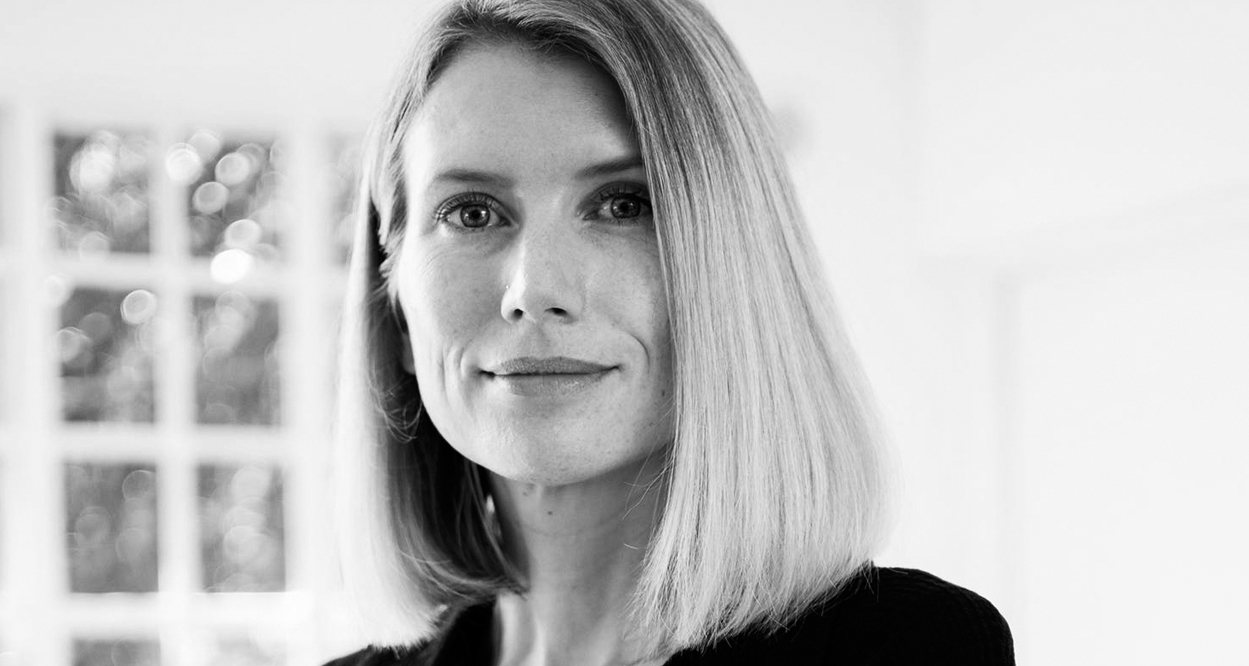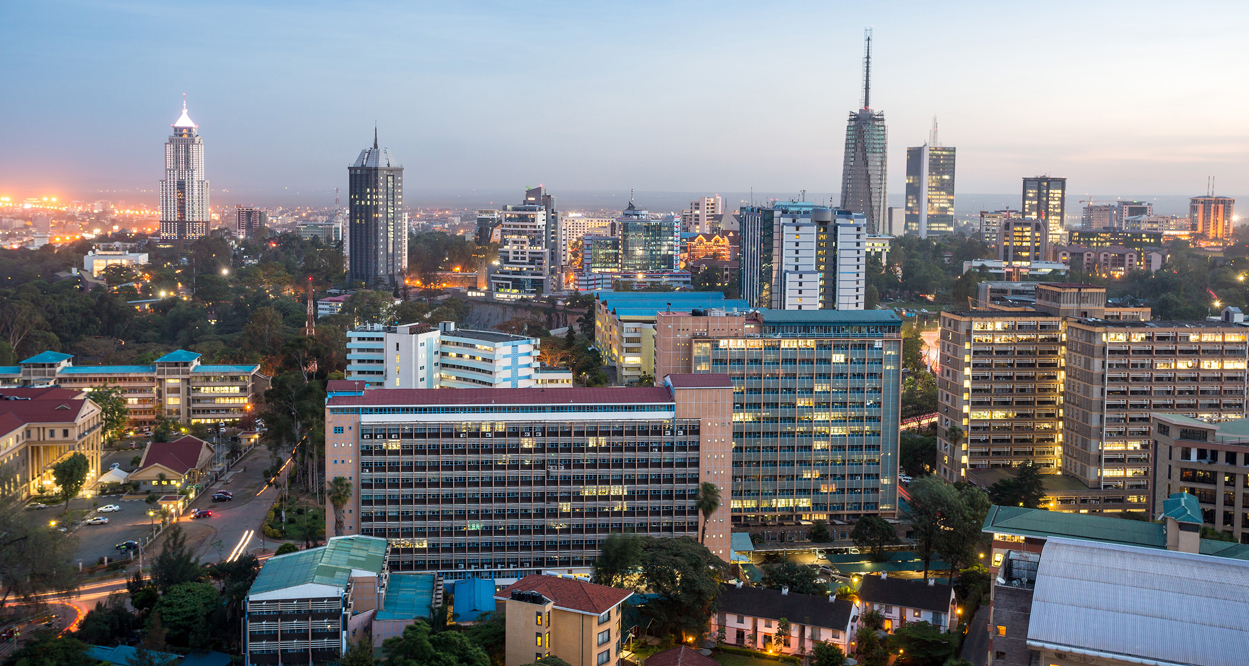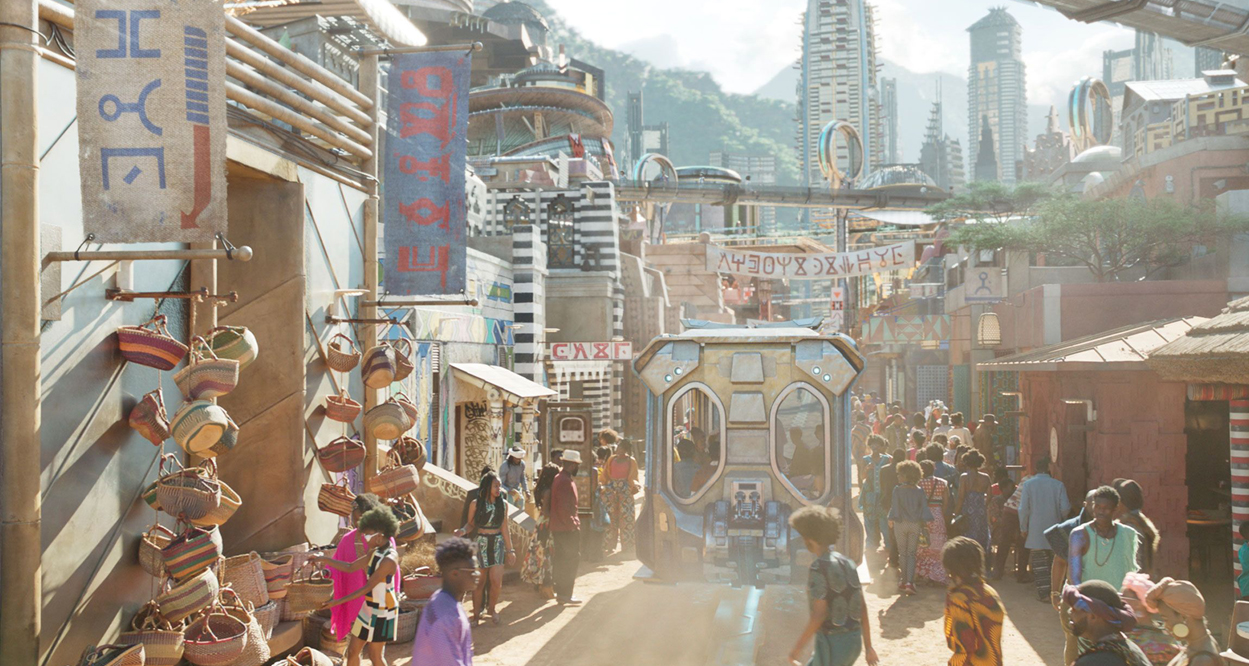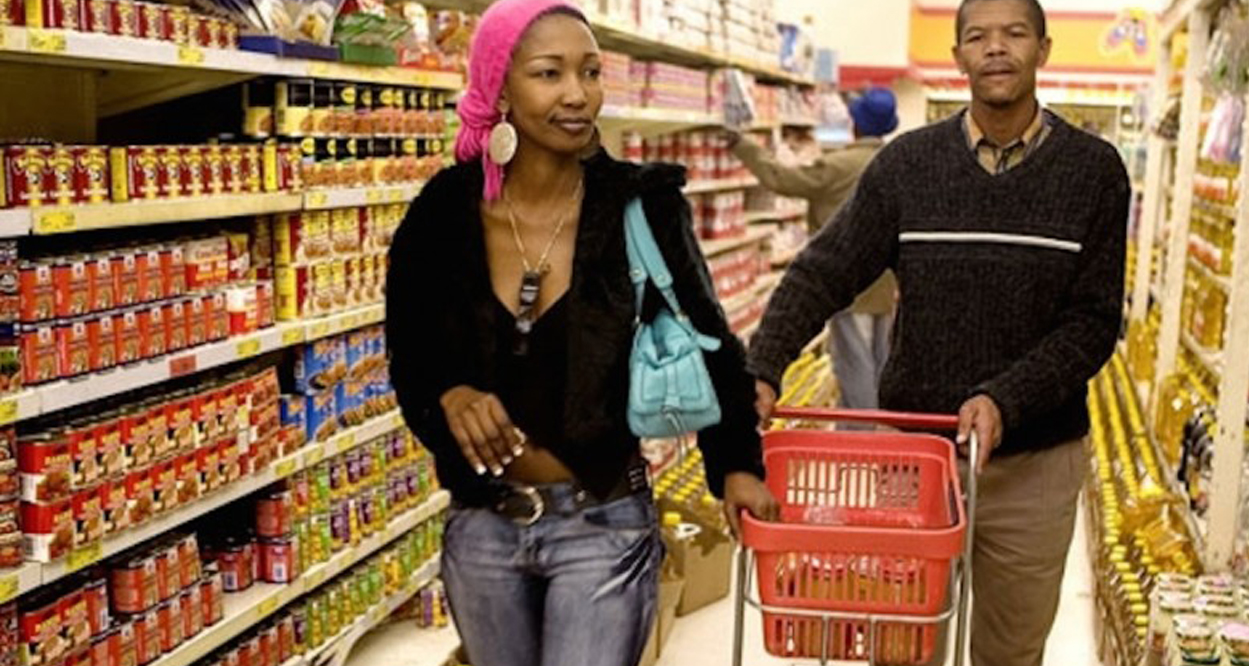
Part one of a two-part interview with social enterprise branding expert Anne Miltenburg, a Dutch brand director on a mission to leverage the power of brand for social and environmental causes. Based in Nairobi, Kenya, she is the founder of Brand The Change, an independent learning organization that trains change makers in brand building skills. In this part of our conversation, she discusses the nuances of working in the social enterprise sector and the rise of the African tech start-up scene.
Kevin Finn: You’ve worked at various world‑renowned design agencies, including Lava, Studio Dumbar and Interbrand, among others. In those roles as a designer, strategist and Creative Director, you’ve worked with different cultures across Europe, the Middle East and Asia. It’s an enviable career path. So, what made you decide to leave all this and set up Brand The Change?
Anne Miltenburg: Well, I was working at Interbrand as Creative Director, and I also had my own clients. I was teaching at the Design Academy in Eindhoven. I was on the board of the Association of Dutch Designers and I was writing articles for Works that Work and various other design magazines. I was just incredibly in love with design and branding. But at some point the love started consuming me. [Laughing]
Work started consuming my life, and I got to a point where I weighed about 52 kilos and found myself going to dinner with a friend—being way too late—and needing to lay down on the floor, because I could no longer stand up. I was burnt out. I realised something needed to change so I went to a school in Amsterdam called THNK to see if I could redesign my practice in a way that felt more fulfilling because trying to move forward on eight or nine different things is really great in terms of challenges, but it also means that you’re not making a dent in anything—not a serious dent, anyway.
I’d always been quite socially engaged, at least very interested in social and environmental topics. And I’d graduated in 2005 on a project focusing on design for ‘visual illiteracy in non‑Western cultures’. That was a really interesting project for me and I missed how branding could help in the world.
I felt that, in the field of branding, it was very much pigeon-holed into staying away from ‘bad’ commercial clients. It seemed to be more about doing pro-bono work for ‘good’ causes. I didn’t feel that either one was the right way forward.
Of course, there’s obviously a very rich history of graphic designers being socially engaged. But I felt that, in the field of branding, it was very much pigeon-holed into staying away from ‘bad’ commercial clients. It seemed to be more about doing pro-bono work for ‘good’ causes. I didn’t feel that either one was the right way forward.
So, I started thinking about what kind of world I wanted to see—if it was totally up to me—in terms of what branding could do. And I came up with this creative question: How can I create a world where a family who wants to start a lemonade factory in Sierra Leone can build a brand that’s as strong as a company like Coca‑Cola?
How can I create a world where a family who wants to start a lemonade factory in Sierra Leone can build a brand that’s as strong as a company like Coca‑Cola?
I really like that creative question because it has several factors. ‘Family’ already implies it’s not a huge organisation. As a result, it’s potentially not very well funded and they will have around 12 different challenges to deal with, from logistics to financials to HR and operations. Branding is just one of them.
And I chose Sierra Leone, not necessarily as a target market but more as an indicator of a country that has a lot of different challenges to solve. One of them is getting access to broader audiences, because there are so many other problems in the world, which are stacked against them.
I basically worked my way from there. That was four years ago and I’ve just prototyped my way forward since then. [Laughter]
In your book, Brand The Change—and also in our previous conversations—you point out that large organisations and enterprises have access to the best branding agencies and tools in the world. However, smaller businesses generally don’t because they usually can’t afford them. This prompted you to find ways to service those businesses through your practice The Brandling. As you stated, you had an interest in social enterprise, which lot of designers do. So, what are the differences between working with social enterprise versus working with any other type of business?
Traditional businesses are very much based on market insights. They are run by people who’ve identified an opportunity or a need that wasn’t being fulfilled. Whereas, (aspiring) social entrepreneurs are usually attempting to address a social or environmental challenge in the world and have to create a business model which would alleviate or improve the situation. Developing that business model requires a lot of crafting—not to mention developing the social impact model—before you get it right, before you have a product or service that people are actually genuinely interested in, and before you then can sell that properly to a large audience.
That makes them entirely different. You have to be far more flexible because the product or service will probably change significantly every few months, and you have to do a lot more research, because the benefit or value to the user/customer is not always so clear cut. When branding or marketing social enterprises, you often see founders or brand experts rely too much on a product or services’ good intentions to carry the narrative, but not enough on creating a convincing value proposition. It’s easy to make one sale based on good intentions, but pretty hard to sustain that over time. We need to do better than that.

Following from this, people might find your location surprising. Why did you decide to base yourself in Nairobi, specifically? Is that a social enterprise hub?
It’s a hidden gem! It’s like the Wakanda [from the film] Black Panther—but it’s in the real world. Nairobi is a hub for tech and social enterprise so there’s an incredible wealth of initiatives here. People are international and local. And they are building scalable services that really provide value for communities and the economy—or the environment. So we work here mostly with tech‑for‑good companies, for example technology for healthcare, women empowerment and conservation.

Nairobi provided a really rich space to develop the ideas in Brand the Change, and became the home base for my learning company. The brand consultancy is now only a small part of my professional practice. Through Brand The Change, we train entrepreneurs to think more like brand strategists. Because there’s so many entrepreneurs here, and they come with such good ideas, it’s a really vibrant place to work.
Another aspect—a more personal one—is that one of our clients became my husband.
Ah, that helps with deciding on the location.
[Laughs] So, that’s definitely the reason why I was able to grow roots here. I’m also a huge part of his company, and he is my ‘Chief Accountability Officer’, who helps me make better strategic decisions about where I want to take my company. So, we are overlapping in life and work quite a bit.
Everything you’ve described about Nairobi may not be common knowledge, yet. We hear a bit about what’s emerging Africa, particularly in the tech scene. However most people might have had some experience—a pretty bad experience—with emails from Nigeria spamming and phishing. Are you seeing a shift from that kind of perception towards the experience you’re having? Is Nairobi becoming more known and accepted as a credible social enterprise tech hub?
Like with any brand, a reputation is built in people’s minds due to the associations they store there over time. Unfortunately, in Western countries, our associations with Africa are based on whatever history classes we’ve been taught, which often gloss over 400 years of colonial atrocities, and embed a very rosy view of the role of Western countries in the world.
[Laughs] Then there is about 60 or 70 years of development aid layered on top of that, which has created this image of poverty and reliance that just add to that preferred Western historic point of view of Europeans (or Caucasian in general) as saviours and saints. And of course, there is the media, which tends to have a huge focus on bad news. For some reason, they seem to love images of stone‑throwing Kenyans [laughs] whenever there’s a protest.
They don’t feature images of people dressed in their Sunday‑best, who stand in line for four hours to vote. I’ve learned journalist aren’t so interested in writing a different story—a story that would change people’s perception. So even the positive stories are often stories of people overcoming poverty. But Kenya has tens of millions of people, a lot of whom are middle class—who go to KFC and who go to the gym. Nigeria has 200 million people and has an incredible tech scene. I think if you don’t want to see it—and no one is there to put you on the right track—you’ll never know.

In a way it’ll be quite a while before people in the West realise what’s going on here. But that doesn’t matter because it’s growing on its own merit and for its own purpose. There are solutions being developed here that I know one day all of us—the rest of the world—will benefit from.
Young Africans, Arabs and Asians could spend a lot of energy trying to change perceptions in the West, or they can invest that energy in building their own future. Why would they choose the first? If the West is hell bent on thinking it’s still the leader of the world, while everyone else has moved on, that is their loss.
In previous conversations we’ve talked about your experiences working in different cultures and different countries. With this in mind, what difficulties can a designer encounter working in these scenarios? In your experience as a designer, how do you navigate those cultural differences?
Australians will understand this analogy: working as a designer in a foreign country, is like being a feral cat. That means that you’re often blundering your way into something you don’t know much about. As a result, you can look totally silly in your new environment, or worse, you could cause a lot of harm. You don’t know a lot about those things a designer needs to know, like: what drives people; what their pains, needs, aspirations around a specific topic are; what solutions they would like to see; or what their reasoning behind rejecting or accepting a solution might be.
Working as a designer in a foreign country, is like being a feral cat. That means that you’re often blundering your way into something you don’t know much about.
There is a romanticised view about exotic problems versus your own culture’s problems which makes some people interested in working in other cultures. But don’t let that romance fool you. For instance, if you think it’s difficult to design for young people in your own country, imagine how hard it is to design for young people who live in a world you have absolutely no idea about. You don’t understand their language, you have no idea what drives them or what they’re facing in their lives. That means you need to be even more of a researcher, to do really, really diligent work and also obviously work with a local team because the danger is that you could be like that cute little girl walking into the room while her Dad was being interviewed live on BBC…
[Laughs]
I find the world of branding—and the world of visual representation—is becoming increasingly homogenised, which is a shame because it’s destroying a lot of cultural vernacular. But on the other hand, [laughs] where previously I might have been worried designing something that’s very ‘Dutch’, no one would find that a problem any more these days.
But I would say that it’s difficult—not just as a designer but as a person—working in different culture. You have to deal with very different hierarchy, different models of working. For instance, in Korea I was the only foreigner on the team. Our team meetings would be in Korean. For two hours the boss talked and the team took notes. While in Holland, [laughs] it would be the opposite; the boss would be taking notes about what the whole team wants to do.
In Korea, I actually found that having a really good leader, with everyone following that leader, makes for a really efficient work ethic. While in Holland, everything needs to be a compromise, you know? “Oh, I hope the junior designer on the team is happy with this direction because, oh my God, what if he’s not?”
I believe flexibility is increasingly important because the industry is changing so fast. If you’re a very rigid person, you’re going to be in for a wild ride for the next couple of decades.
Having those kinds of experiences can teach you a lot about yourself and make you much more flexible. And I believe flexibility is increasingly important because the industry is changing so fast. If you’re a very rigid person, you’re going to be in for a wild ride for the next couple of decades…
[Both laughing]
You mentioned the homogenization of the visual language. With your branding tools, have you found a different acceptance in different countries, or has there been universal acceptance for how branding should be adopted?
Our method owes a huge debt to Design Thinking and tools like the Business Model Canvas, which have permeated the world pretty successfully. There is a global co-creative, sticky‑note culture most modern businesses are somewhat familiar with. So it actually really depends more on the industry than the culture.
For instance, the NGO world is far more jargon‑y and it’s really hard to understand the language and decipher what some of it means. You would almost think they don’t want anyone to know what they are trying to achieve!
Then there are businesses who misunderstand certain elements, like ‘Purpose’, or what a ‘Vision’ is. They often think a vision for a company is delivering the biggest value to their shareholders. But that’s not a vision, that’s a business goal. So the industry cultures are stronger than the local cultures.
In your book you state: “Branding is a tool, and like any tool, you can use it for good or evil. The intention of this book is to democratize branding knowledge to advance the progress of businesses with positive social or environmental impact. Using branding for evil is an extreme application.” With this in mind, do you now frown upon the work agencies you used to work for do?
Not at all. I think we have a simplistic view of what good is and what evil is. For example: a charity is good and McDonald’s is bad. But I think McDonald’s has incredible impact—or the potential to have a positive impact, I should say. It’s just that their leadership, and the way they operate, isn’t tuned that way. But, if they did do that I could be a huge McDonald’s fan.
But, instead they think: “Oh, you know, the world is becoming more sustainable, what should we do? Let’s hire a branding agency and see what they say.” And the branding agency says: “OK, well, if you want to be more sustainable, let’s replace red and yellow with green and yellow. And let’s make the interior of the restaurants look very green—with photos of apples and natural wood accents.”
That’s a simplified example, of course, but it’s a true one, and it’s how things are often approached. But it’s delusional. They must really think I’m a toddler if they believe I’m going to buy that.
However, I am also in complete awe for that kind of creativity. It’s amazing that—as a company—you can come up with that visual solution. In my previous roles, I was sometimes asked to come up with those kind of ideas and I couldn’t. I simply wasn’t good at it—and that’s the thing. So I don’t dismiss that kind of work out of some sense of moral superiority. It’s just a recognition that I can’t sell something I don’t believe in. I just simply can’t do it. I wasn’t at all good at Interbrand. In fact, I think I really sucked.
For example, we had an assignment for a drug store. They sell the same product as everyone else. They have lipstick and tampons at the same price as everyone else and they asked us to give meaning to the brand. And I just thought: “But if you guys don’t know [your meaning], who am I to tell you what your purpose is?”
Of course, there are a lot of people in the world who are great at that type of work. And I don’t think they need to be embarrassed, at all. There’s nothing wrong with it. I just wish those drug stores—as well as the people doing the branding—would think more about where they could actually add purpose, instead of just contribute to the narrative. As you’ve said in previous our conversations, life is short. So we need to ask ourselves: What more could we do?
Is there room for the principles you’re applying with social enterprise to be applied to the design field, to the branding agencies?
I’m seeing a huge trend with brand agencies and designers who want to work with clients who have a purpose. And I think that’s great. But that often results in agencies merely doing the same thing they did before, only now for social impact clients or social enterprises. Branding for social enterprises is an art in itself. Instead of just switching allegiance, it needs some form of extra research and extra specialization.
I actually think a lot of people in the branding space have the desire to build something themselves, not just help do this for someone else, but create their own companies, movements, products. And I think that would be super interesting.
Another interesting area is designers working in-house. I’m seeing this first hand where, about one day a week, I’m the in‑house brand manager for a company. And that really could be a full‑time role, but unfortunately, I just don’t have the time. Building a brand from inside a company is enjoyable because it also allows you to be in a much different position to consultants. It gives you more space, but also much more responsibility. You’re the one who has everything riding on their shoulders and that’s tough. [Laughs]
Image credits
Nairobi photography by Sopotnicki/Shutterstock
Wakanda image sources on Architectural Digest
Middle class Nairobi image sourced on Rookie Manager